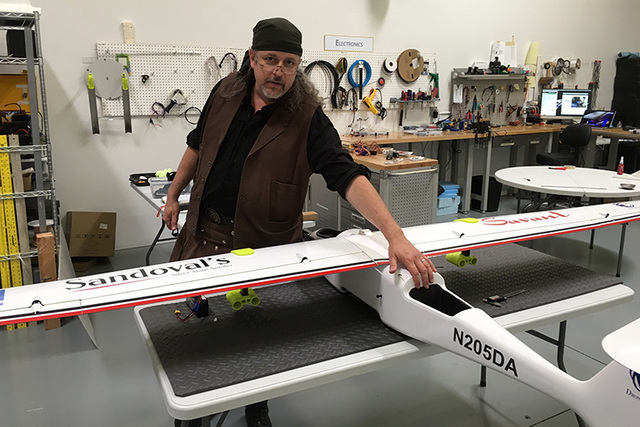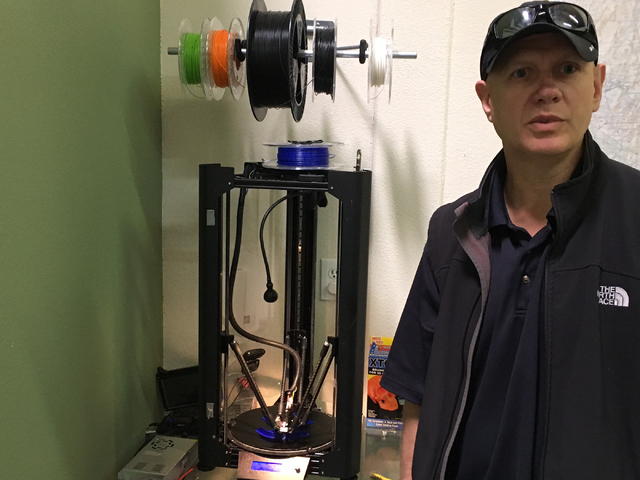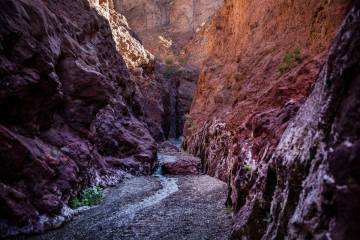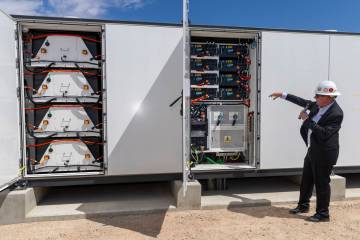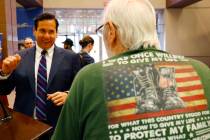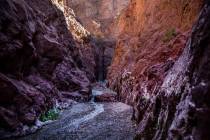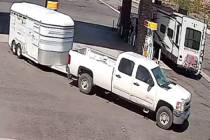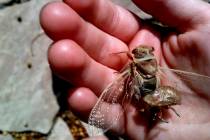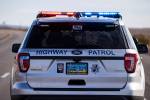Drone cloud-seeding focus of Nevada project
RENO — There’s been no business like the drone business in Nevada lately.
The most recent historic achievement came April 29, from a partnership between the Desert Research Institute and the Reno-based manufacturing company Drone America — a fixed-wing drone successfully deployed flares containing silver iodide crystals as part of a snow-making experiment.
The cloud-seeding payload was activated on a drone flying over Hawthorne. No, snow did not fall. It was a clear day and the Savant unmanned aerial vehicle flew to an altitude of only about 400 feet for 18 minutes.
But the implications are significant, Drone America President and CEO Mike Richards said.
If the Nevada System of Higher Education’s research arm can get another grant to continue the project next year, there may soon be a day when fleets of drones carrying silver iodide particles fly into the wettest, most unstable parts of winter storms, helping squeeze out additional, critical moisture in Nevada and other arid regions around the globe. This year’s $400,000 grant runs out June 30.
“You can think of it as an atmospheric bloodhound seeking out supercooled water,” Richards said.
“Drone America’s roots are in humanitarian disaster response,” he said. “Combined with DRI and their expertise in atmospherics, we can go anywhere in the world to drought-stricken regions and maybe impart some knowledge and capabilities to alleviate that suffering.”
Office funds research
Adam Watts, an assistant research professor at DRI and an expert in unmanned aircraft systems for ecological and natural-resources applications, is the principal investigator on the project, funded thorough the Governor’s Office of Economic Development and its Knowledge Fund.
“I’ve come to realize that we build our economy ultimately on natural resources like water,” Watts said. “Conservation is incredibly important. But at the other end, trying to enhance the water supply is one way to directly help the economy.”
The drone — named the “Sandoval Silver State Seeder” in honor of Gov. Brian Sandoval’s support for the state’s drone industry — deployed two silver-iodide flares, successfully testing and demonstrating its ability to perform unmanned aerial cloud seeding operations.
“While it was doubtful that we actually coaxed any precipitation on that dry day, we proved that technologically it works,” Watts said. “The government and the people of Nevada have had a chance to see us doing something that I think is significant.”
Industry expands in state
The cloud-seeding experiment comes as the drone industry finally takes off in Nevada.
In March, Flirtey, an independent drone delivery company, completed the first fully autonomous, FAA-approved urban drone delivery in the United States in an uninhabited residential setting in Hawthorne. The company delivered a package that included bottled water, emergency food and a first aid kit by drone.
And in April, Nevada and NASA said they have teamed up to develop an air traffic control management for drones weighing 55 pounds or less. The project is underway at the Reno-Stead Airport north of Reno.
Tom Wilczek, an aerospace and defense specialist with GOED, said the catalyst for the expansion of drone activity in Nevada came when the FAA recently granted the six test site states broad authority to sponsor flights. They remain limited to line-of-sight and vehicles of 55 pounds or less, among other restrictions.
“The new authority completely transformed the tempo and the ability for us to really work on unmanned aerial vehicle flights,” Wilczek said.
The FAA action made the bureaucratic process for authorizing drone flights much easier to administer. As a result, there have been more than 300 drone flights in Nevada since Jan. 1, he said. Most of the flight activity is proprietary information.
The relationship between DRI and Drone America goes back before 2013, when the Federal Aviation Administration designated the state as one of six locations for commercial drone research.
Interest is being expressed about the project from far-flung areas of the world, including South Africa, the United Arab Emirates and the Philippines, where cloud seeding could help with their water supply issues, he said.
But Richards, who said his company pioneered the use of the Hawthorne Army base airport for drone research, said the DRI project could also result in a cloud-seeding program for the area, providing much-needed water for the environmentally distressed Walker Lake.
Cloud seeding can also be used to suppress hail or eliminate fog from around airports, mitigating potential weather-related hazards, for example. The research also has applications to other operations, from using drones for wildlife management to fighting wildfires. A drone could provide a critical communications link for ground crews.
Cloud seeding missions
Cloud seeding, which can increase moisture from a storm by about 8 percent to 10 percent, has been part of DRI’s research since the 1970s. The institute has a $300,000 contract with the Truckee Meadows Weather Authority and the Western Regional Water Commission to do cloud seeding in the Lake Tahoe area using ground-based generators. Other operations have in the past included seeding in the Ruby Mountains.
DRI has also performed cloud seeding by using piloted aircraft, but such work is dangerous. In 1980, DRI lost two pilots and two scientists in an airplane crash during a cloud-seeding mission. One victim was Peter Wagner, the husband of former Lt. Gov. Sue Wagner.
Drones will allow cloud seeding to be performed without risking human life.
Business thrives in Reno
Richards said safety is built into every aspect of his drone business. The public has to know that the aircraft are being operated safely, he said.
On a tour of the facilities, Richards explained the company builds its aircraft from scratch. Engineers and technicians were working away as a 3-D printer created a unique part for one of the vehicles.
In one part of the building, Zack Clark was installing a parachute on the “Sandoval Silver State Seeder” to let it land safely in a breakdown. The system will protect both the vehicle, with its nearly 12-foot wingspan, and the public, because it can fly at more than 50 mph at half-throttle, he said.
Drone future is bright
Wilczek said the industry awaits new FAA rules allowing small drones to be used for commercial purposes, but again limited to line-of-sight. This will allow for opportunities in real estate, bridge inspections and some agriculture operations, he said.
Allowing small-drone use beyond line-of-sight will be the next step, finally expanding to large drone use, Wilczek said.
“Nevada’s strength is in testing large systems,” he said. “I can hardly wait.”
Contact Sean Whaley at swhaley@reviewjournal.com or 775-461-3820. Find him on Twitter: @seanw801
RELATED:
Nevada first: DRI seeds clouds using unmanned aircraft



